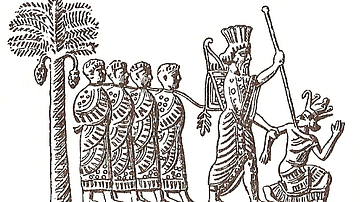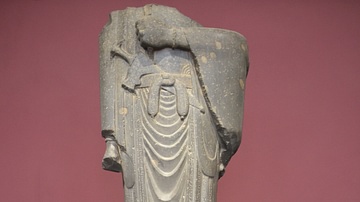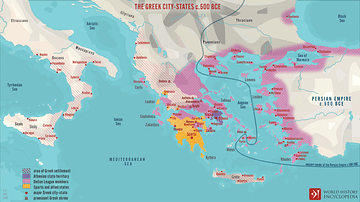Illustration
A map illustrating the rise and evolution of the Achaemenid Persian Empire (from the name of Achaemenes, an ancestor of the empire's founder, Cyrus the Great) from its origins in around 550 BCE when Cyrus II of Persia conquered the Medes until its height during the reign of another Great - Darius I when, in c. 500 BCE, it brought under a single government the three major sites of early human civilization: Mesopotamia, the Nile Valley and and the valley of Indus river. One of the largest empires in history, this Iron Age civilization became a center of culture, religion, science, art and technology for more than two centuries until, in 329 BCE, it was conquered by Alexander the Great.
About the Author
Cite This Work
APA Style
Netchev, S. (2022, July 05). The Achaemenid Persian Empire c. 500 BCE. World History Encyclopedia. Retrieved from https://www.worldhistory.org/image/16107/the-achaemenid-persian-empire-c-500-bce/
Chicago Style
Netchev, Simeon. "The Achaemenid Persian Empire c. 500 BCE." World History Encyclopedia. Last modified July 05, 2022. https://www.worldhistory.org/image/16107/the-achaemenid-persian-empire-c-500-bce/.
MLA Style
Netchev, Simeon. "The Achaemenid Persian Empire c. 500 BCE." World History Encyclopedia. World History Encyclopedia, 05 Jul 2022, https://www.worldhistory.org/image/16107/the-achaemenid-persian-empire-c-500-bce/. Web. 28 Apr 2025.








